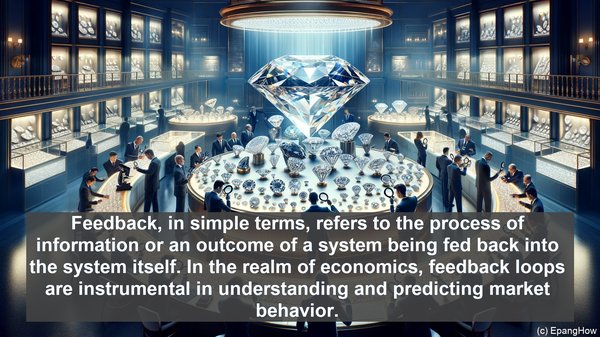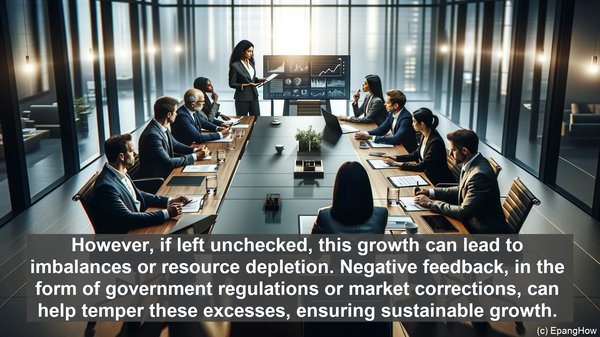Introduction: The Role of Feedback in Economics
Hello everyone! Welcome to our article on the fascinating world of feedback mechanisms in economics. Feedback, in simple terms, refers to the process of information or an outcome of a system being fed back into the system itself. In the realm of economics, feedback loops are instrumental in understanding and predicting market behavior. Today, we’ll be focusing on two types of feedback: positive and negative.

Positive Feedback: Amplifying the Impact
Positive feedback, as the name suggests, is a mechanism that amplifies the impact of an initial event or change. In economics, this can lead to a self-reinforcing cycle, where an increase in a certain factor leads to further increases, creating a snowball effect. One classic example of positive feedback is the stock market. When investors perceive a rise in stock prices, it often triggers a buying spree, driving the prices even higher. This, in turn, attracts more investors, leading to a further surge. However, positive feedback isn’t always beneficial. In some cases, it can lead to market bubbles or excessive volatility.
Negative Feedback: Restoring Equilibrium
In contrast to positive feedback, negative feedback acts as a stabilizing force in the system. It counteracts any deviations from the equilibrium, aiming to restore balance. Let’s take the example of inflation. When prices rise, it reduces the purchasing power of consumers. As a result, demand decreases, which eventually leads to a decrease in prices. This negative feedback loop helps maintain price stability. Similarly, negative feedback can also be observed in the labor market. If there’s a shortage of skilled workers, it drives up wages. This, in turn, attracts more people to acquire those skills, eventually balancing the demand and supply.

Interplay of Positive and Negative Feedback
While positive and negative feedback are often discussed as separate entities, they are intricately connected in many economic scenarios. In fact, they can create a delicate dance, shaping the overall market dynamics. Take the example of economic growth. Positive feedback, in the form of increased investment or technological advancements, can spur economic growth. However, if left unchecked, this growth can lead to imbalances or resource depletion. Negative feedback, in the form of government regulations or market corrections, can help temper these excesses, ensuring sustainable growth.
